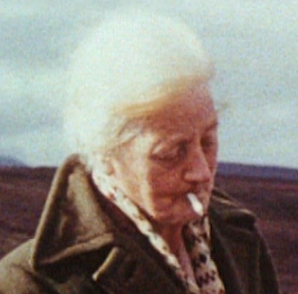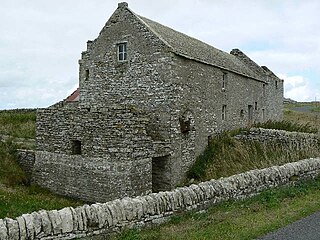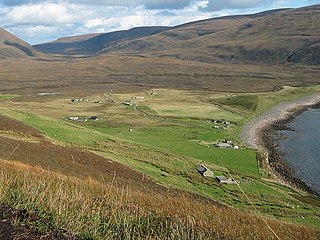Ola Gorie | |
|---|---|
 Ola at her workbench, c. 1970 | |
| Born | 27 October 1937 |
| Nationality | Scottish |
| Occupation | Jewellery designer |
Ola Gorie (born 27 October 1937) is a Scottish jewellery designer and one of the founders of the modern craft movement in Scotland.
Ola Gorie | |
|---|---|
 Ola at her workbench, c. 1970 | |
| Born | 27 October 1937 |
| Nationality | Scottish |
| Occupation | Jewellery designer |
Ola Gorie (born 27 October 1937) is a Scottish jewellery designer and one of the founders of the modern craft movement in Scotland.
Ola Gorie was born in Kirkwall, Orkney. Her parents, Minnie and Patrick Gorie, ran a long-established grocers and wine merchants, Kirkness & Gorie, in central Kirkwall. Despite growing up in a commercial environment, Ola decided to pursue an artistic career and attended Gray's School of Art in Aberdeen, leaving in 1960 as the first graduate of its jewellery department. While there, she shared a flat with the Orcadian painter Sylvia Wishart. [1]
Ola Gorie returned to Orkney where three jewellery shops in Kirkwall agreed to sell her designs. When she took over her own shop, success came quickly. [2] Her early designs, the first to be originated in Orkney since Viking times, [3] drew heavily on Orkney's Norse heritage, featuring images such as the Maes Howe dragon, inspired by Viking graffiti in a Neolithic tomb. Her jewellery found quick acceptance both locally and, by the end of the sixties, across the country. [4] Appreciation of it grew as part of the wider craft movement in Britain in general, and the Scottish Highlands in particular. Her work drew inspiration from Orkney's Norse, Pictish, Scottish and Celtic heritage [5] and also from natural forms, and art history. Commissions for one-off pieces came from the Queen Mother, Liberty of London, the British Museum and the House of Commons.
By the time of her retirement from business, in 1997, Ola Gorie employed as many as 55 staff, and her jewellery was exported around the world. The business is now run, on a smaller scale, by Ola Gorie's daughter, textile designer Ingrid Tait, and operates out of the same premises the family business has occupied since 1859. [6]
In 1999, Ola Gorie was awarded an MBE in recognition of her services to the jewellery industry. [7] Other awards include winner of the Scottish Gift of the Year in 1997 (shortlisted in 1998, 1999 and 2003) and runner up in 2000's Kayman Award. She lives in Orkney, and is involved in many artistic activities.
In November 2010, the Orkney Museum launched a retrospective exhibition, 'Celebrating 50 Years of Ola Gorie'. [8] It ran to the end of January 2011 and confirms her importance in contemporary Orcadian culture. The exhibition brought together many of her early and iconic designs, along with designs sketches, the tools of her craft and original artefacts from the museum's collection which had inspired her, including a 2nd-century AD brooch. Another ancient piece of jewellery, the Westness Brooch, was found in a Viking boat burial on the Orkney isle of Rousay. However, her jewellery extends far beyond the Orkney influence: she was an early admirer of Charles Rennie Mackintosh and helped revive his style. The natural world of seaweed, thistles and pearls have a place in the collection too. Among the cabinets of wax moulds, account books and relics of a career was a letter from Margaret Thatcher who admired a ring.

Orkney, also known as the Orkney Islands, is an archipelago in the Northern Isles off the north coast of Scotland. Orkney is 10 miles (16 km) north of Caithness and has about 70 islands, of which 20 are inhabited. The largest island, the Mainland, has an area of 523 square kilometres (202 sq mi), making it the sixth-largest Scottish island and the tenth-largest island in the British Isles. Orkney's largest settlement, and also its administrative centre, is Kirkwall.

Rousay is a small, hilly island about 3 km (1.9 mi) north of Mainland, the largest island in the Orkney Islands of Scotland. It has been nicknamed "Egypt of the north", due to its archaeological diversity and importance.

Kirkwall is the largest town in Orkney, an archipelago to the north of mainland Scotland.

Stromness is the second-most populous town in Orkney, Scotland. It is in the southwestern part of Mainland, Orkney. It is a burgh with a parish around the outside with the town of Stromness as its capital.

The Mainland, also known as Hrossey and Pomona, is the main island of Orkney, Scotland. Both of Orkney's burghs, Kirkwall and Stromness, lie on the island, which is also the heart of Orkney's ferry and air connections.

Sanday is one of the inhabited islands of Orkney that lies off the north coast of mainland Scotland. With an area of 50.43 km2 (19.5 sq mi), it is the third largest of the Orkney Islands. The main centres of population are Lady Village and Kettletoft. Sanday can be reached by Orkney Ferries or by plane from Kirkwall on the Orkney Mainland. On Sanday, an on-demand public minibus service allows connecting to the ferry.

Eday is one of the islands of Orkney, which are located to the north of the Scottish mainland. One of the North Isles, Eday is about 24 kilometres from the Orkney Mainland. With an area of 27 km2 (10 sq mi), it is the ninth-largest island of the archipelago. The bedrock of the island is Old Red Sandstone, which is exposed along the sea-cliffs.

Shapinsay is one of the Orkney Islands off the north coast of mainland Scotland. With an area of 29.5 square kilometres (11.4 sq mi), it is the eighth largest island in the Orkney archipelago. It is low-lying and, with a bedrock formed from Old Red Sandstone overlain by boulder clay, fertile, causing most of the area to be used for farming. Shapinsay has two nature reserves and is notable for its bird life. Balfour Castle, built in the Scottish Baronial style, is one of the island's most prominent features, a reminder of the Balfour family's domination of Shapinsay during the 18th and 19th centuries; the Balfours transformed life on the island by introducing new agricultural techniques. Other landmarks include a standing stone, an Iron Age broch, a souterrain and a salt-water shower.

The Northern Isles are a chain of islands off the north coast of mainland Scotland. The climate is cool and temperate and highly influenced by the surrounding seas. There are two main island groups: Shetland and Orkney. There are a total of 36 inhabited islands, with the fertile agricultural islands of Orkney contrasting with the more rugged Shetland islands to the north, where the economy is more dependent on fishing and the oil wealth of the surrounding seas. Both archipelagos have a developing renewable energy industry. They share a common Pictish and Norse history, and were part of the Kingdom of Norway before being absorbed into the Kingdom of Scotland in the 15th century. The islands played a significant naval role during the world wars of the 20th century.

George Mackay Brown was a Scottish poet, author and dramatist with a distinctly Orcadian character. He is widely regarded as one of the great Scottish poets of the 20th century.

Margaret Caroline Tait was a Scottish medical doctor, filmmaker and poet.
Sigurd Hlodvirsson, popularly known as Sigurd the Stout from the Old Norse Sigurðr digri, was an Earl of Orkney. The main sources for his life are the Norse Sagas, which were first written down some two centuries or more after his death. These engaging stories must therefore be treated with caution rather than as reliable historical documents.

Orcadians, also known as Orkneymen, are an ethnic group native to the Orkney Islands, who speak an Orcadian dialect of the Scots language, a West Germanic language, and share a common history, culture and ancestry. Speaking Norn, a native North Germanic language into the 19th or 20th century, Orcadians descend significantly from North Germanic peoples, with around a third of their ancestry derived from Scandinavia, including a majority of their patrilineal line. According to anthropological study, the Orcadian ethnic composition is similar to that of Icelandic people; a comparable islander ethnicity of North Germanic origin.
Hildr or RagnhildrHrólfsdóttir was a 9th-century woman who is referenced in various Old Norse sources including Óláfs saga helga, Orkneyinga saga, and Landnámabók and is also one of the few female skalds from whom verses survive.

Prehistoric Orkney refers only to the prehistory of the Orkney archipelago of Scotland that begins with human occupation. Although some records referring to Orkney survive that were written during the Roman invasions of Scotland, “prehistory” in northern Scotland is defined as lasting until the start of Scotland's Early Historic Period.

Tankerness is a district in the St Andrews parish in Mainland, Orkney, Scotland. Essentially a peninsula, it is about 13 kilometres (8 mi) south-east of Kirkwall and 1 kilometre (0.6 mi) east of Kirkwall Airport. The origin of the place name is uncertain, but it may derive from the Norse personal name "Tannskári". A "ness" is a promontory.

The Scar boat burial is a Viking boat burial near the village of Scar, on Sanday, in Orkney, Scotland. The burial, which dates to between 875 and 950 AD, contained the remains of a man, an elderly woman, and a child, along with numerous grave goods. Although the site had to be excavated quickly because of the threat of coastal erosion owing to bad weather conditions, it yielded many important finds.

Sylvia Wishart FRSA was a Scottish landscape artist.
Mary Anne Baikie a Scottish suffragist who established the Orcadian Women's Suffrage Society (OWSS) and grew the membership and public interest in the debate, in the Orkney Isles, during the campaigns for Votes for Women.

Rackwick is a small coastal crofting township in the north west of the island of Hoy in Orkney, Scotland.